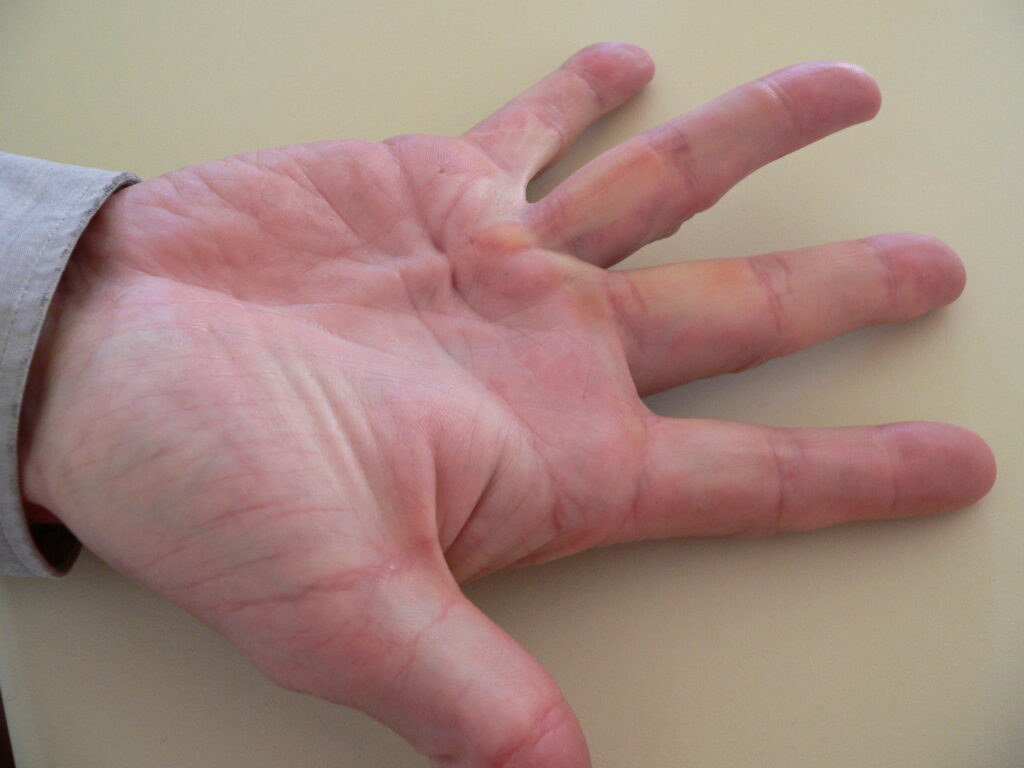Dupuytren’s contracture is a progressive hand condition that affects the connective tissue beneath the skin of the palm and fingers. This disorder causes the fingers to bend inward, making it difficult to perform everyday tasks. While the exact cause remains unknown, certain risk factors such as genetics, age, and lifestyle choices contribute to its development. This guide explores the causes, symptoms, diagnosis, and treatment options for Dupuytren’s contracture.

What is Dupuytren’s Contracture?
Dupuytren’s contracture is a condition in which fibrous tissue thickens and shortens, leading to finger contracture. This condition primarily affects the ring and little fingers, though any finger can be involved. The disease progresses slowly and can eventually impair hand function.
Causes and Risk Factors
Although the precise cause of Dupuytren’s contracture remains uncertain, several risk factors have been identified:
- Genetics: A strong hereditary link is associated with the disease.
- Age: Most cases occur in individuals over 50.
- Gender: Men are more likely to develop severe forms of the condition.
- Lifestyle Factors: Smoking, alcohol consumption, and diabetes increase risk.
- Hand Trauma: Repetitive hand injuries may contribute to development.
Symptoms and Progression
Dupuytren’s contracture typically progresses through distinct stages:
- Nodule Formation: Small, firm lumps appear on the palm.
- Tissue Thickening: The skin may feel tight or dimpled.
- Finger Contracture: One or more fingers bend toward the palm and cannot be straightened.
- Loss of Function: Daily activities become difficult due to limited hand mobility.
Diagnosis and Clinical Examination
A healthcare provider diagnoses Dupuytren’s contracture based on physical examination and medical history. Key diagnostic steps include:
- Palpation Test: Feeling for nodules and cords under the skin.
- Tabletop Test: The patient attempts to lay their hand flat on a table. Inability to do so indicates contracture.
Treatment Options
While there is no definitive cure, various treatments help manage symptoms and improve hand function.
Non-Surgical Treatments
- Steroid Injections: Reduce inflammation and slow progression.
- Collagenase Injections (Xiaflex): Break down fibrous tissue.
- Needle Aponeurotomy: Minimally invasive technique to cut thickened tissue.
- Hand Therapy & Exercises: Improve mobility and delay worsening.
Surgical Treatments
- Fasciotomy: Cutting contracted tissue to improve flexibility.
- Subtotal Palmar Fasciectomy: Removing affected tissue to prevent recurrence.
- Dermofasciectomy: Recommended for recurrent cases, involves skin grafting.
Recovery and Rehabilitation
Post-treatment rehabilitation includes:
- Physical Therapy: Strengthening and stretching exercises.
- Splinting: Used after surgery to maintain finger alignment.
- Regular Follow-Ups: Monitoring progress to prevent recurrence.
Prevention and Lifestyle Adjustments
Although prevention is not always possible, some strategies may help reduce risk:
- Maintain hand flexibility with regular stretching.
- Avoid excessive alcohol consumption and smoking.
- Manage underlying conditions like diabetes.